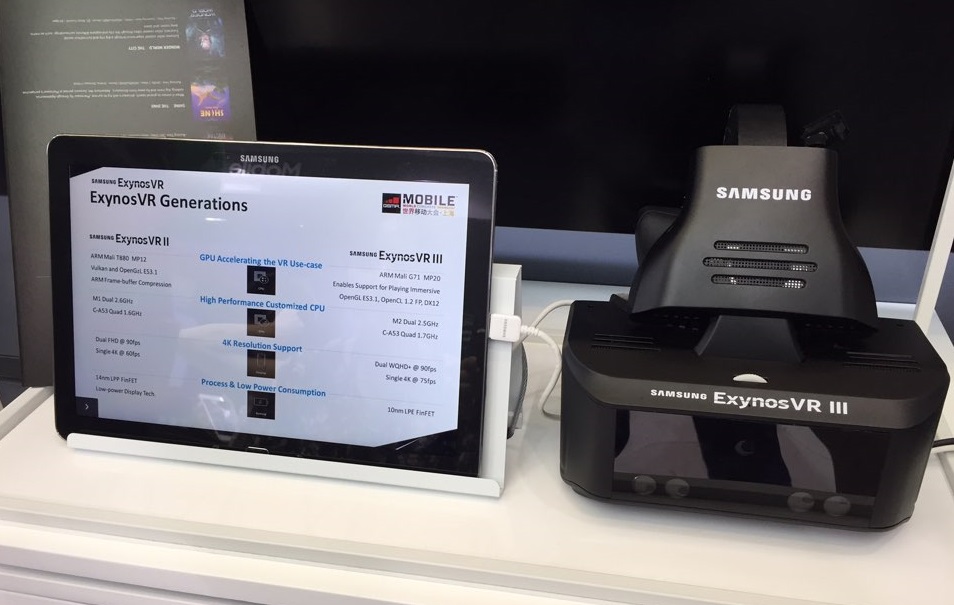 EMERGING TECH
EMERGING TECH
 EMERGING TECH
EMERGING TECH
 EMERGING TECH
EMERGING TECH
Eye tracking hardware and software developer Visual Camp announced today that its technology would be incorporated into the still-unreleased Samsung Electronics Co. Ltd.’s next-generation Exynos VR virtual-reality head-mounted display.
The Exynos III prototype HMD (pictured) follows in the footsteps of Samsung’s Gear VR headset, but embeds its own stand-alone display, powered by Samsung’s mobile chipset Exynos, instead of requiring the user to install a own high-end smartphone to act as the display.
The prototype’s existence was revealed in Visual Camp’s press release on the subject of incorporated eye tracking technology. It has been known for some time that Samsung has been developing a stand-alone mobile VR headset, rumored to be named “Odyssey.” The company also showed off the technology at Mobile World Congress 2017, where Visual Camp also presented its technology.
The current virtual-reality industry revolves around two types of VR headsets: bulky, head-mounted displays connected by heavy wires to PCs to deliver high-performance VR and lightweight, unconnected cases that require high-end smartphones. In the next-gen headsets, a stand-alone design eschews wires, instead using Wi-Fi technology or acting as mobile devices.
Eye tracking technology is expected to be a must-have for the next generation of all-in-one mobile designed VR headsets because of the intense processing requirements of VR display. The current generation of mobile VR headsets – including those that use high-performance smartphones – can tend to overheat and produce excess wear on components.
Using eye tracking, VR rendering hardware and software can take advantage of something called foveated rendering, in which high detail is rendered only in parts of the scene where the user is currently looking. This allows the rendering software to do quick, cheap and messy rendering of other parts of the scene, saving on power and computation cycles.
Because the upcoming Exynos-powered headset is not yet released, Samsung has not released any information on its specifications. Visual Camp, however, has revealed that it will include several other tracking technologies alongside eye tracking, including hand movement tracking and voice and facial expression recognition — all useful sensor frameworks for providing an immersive experience.
“Or technology was internationally recognized at MWCS 2017, enabling us to secure a bridgehead for future global marketing efforts,” Visual Camp Chief Executive Suk Yunchan said. “Now, we will continue promoting the high quality of Korean startup technologies and products overseas.”
Eye tracking technology startups are particularly well-positioned for the future of VR because the technology is crucial to make mobile VR possible. Many players in the VR industry know this and a few acquisitions have recently come to light. In June, Apple Inc. acquired Germany-based SensoMotoric Instruments GmbH and in December, Facebook Inc. acquired Copenhagen-based eye-tracking startup The Eye Tribe ApS.
Even the HTC Vive is getting the eye tracking treatment, with modular hardware inserts developed by Chinese startup 7invensun announced in May.
THANK YOU